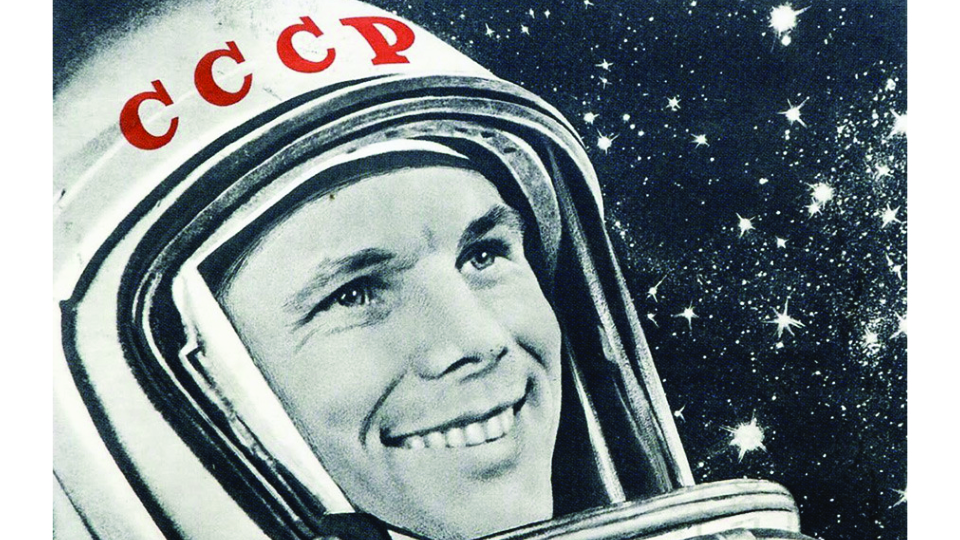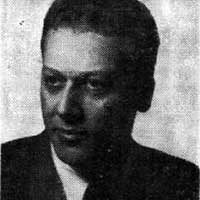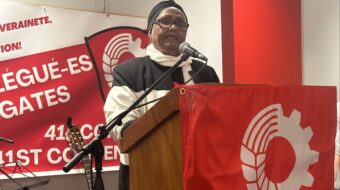
This article is part of the People’s World 100th Anniversary Series.
At 6:07 am on April 12, 1961, a rocket blasted into space from the Baikonur Cosmodrome in the Kazakh Soviet Socialist Republic. Aboard was Yuri Gagarin, a 27-year-old Soviet Air Force pilot and cosmonaut. By the time he returned to Earth 108 minutes later, his place in history was cemented forever. Gagarin, a member of the Communist Party of the Soviet Union, had become the first human being to travel to outer space.
The achievement of Gagarin and the Soviet scientists and engineers who made his journey possible was hailed around the world. It marked the second major milestone achieved by the Soviet space program; the first was the launch of Sputnik, the world’s first satellite, in 1957. His flight was celebrated in many countries as a victory for humankind generally and proof of socialism’s capability, in particular.
Mass celebrations were held all over the USSR in Gagarin’s honor, including a 12-mile-long parade attended by millions of people at Moscow’s Red Square. He was invited to visit more than 30 countries in the years that followed and became an advocate for greater international cooperation and ending the Cold War arms race.
He had a message for the world: “Orbiting Earth in the spaceship, I saw how beautiful our planet is. People, let us preserve and increase this beauty, not destroy it.”

Not everyone was receptive to his call for peace and disarmament, however. Reportedly fearful of the popularity of a Communist spaceman and the positive image that his flight gave to Soviet science, U.S. President John F. Kennedy banned Gagarin from entering the United States.
In 1962, Gagarin was elected to the Soviet legislature and became a designer and instructor at Star City, the USSR’s cosmonaut training facility. His life was tragically cut short when, in March 1968, he and a co-pilot were killed when the MiG-15 jet they were flying crashed. He was given a hero’s burial in the Kremlin wall in Moscow.
The article below is from The Worker, a predecessor of People’s World. It was written by our Moscow correspondent, John Pittman, on the day of Gagarin’s flight.
USSR breaks man’s fetters to Earth
By John Pittman
The Worker, April 16, 1961
MOSCOW — For hours now, this twelfth day of April 1961 has been filled with excitement here in the USSR capital. Crowds in Red Square and Sverdlov Square, groups marching up Gorky Street or standing in the parks, shoppers huddling in the stores—everyone is talking about Yuri Gagarin, the 27-year-old Soviet army pilot who became this morning the first man into outer space. Yuri’s name has been on everyone’s tongue since mid-morning.

When the street loudspeakers, which are silent except on holidays, broke the news of his flight, I was passing a construction project. When the first words came, the workers left their tasks and gathered on the ground.
In an office building further down the street, everyone tried to talk at once. There was jubilation everywhere. But one man spoke of the hazards of re-entry. The radio was bringing direct reports from Yuri. He was being observed by TV connections with the nearly five-ton spaceship.
He was reportedly in good health but then came the word that Yuri had returned safely at 10:55 am and his request to tell the Soviet Government, the Central Committee of the Communist Party, and Premier Khrushchev his mission had been fulfilled successfully. He had neither injury nor shock.

In a few minutes, Yuri’s picture was on TV, where it remained throughout the day except when the screen brought pictures of events throughout the country.
Watching TV today is an experience in itself. Crowds in Moscow and Kiev, gatherings on the street and man-in-the-street interviews, factory meetings, executive meetings of city, district, regional Soviets—it seems as if the entire country has mobilized to greet the hero.
The Government and Central Committee of the Communist Party called Yuri’s feat a product of the victorious socialist system. They declared there was a time when no one believed that ordinary workers and farmers could successfully run a state, but that now a state of ordinary workers and farmers has successfully launched a man into space.
The Soviet people consider this to be an achievement of all mankind, they said, calling once again for an end to the arms race and the establishment of conditions for man’s continued advance.
Premier Khrushchev gave a hint of what this city is preparing for Yuri when he wired the pilot that he was waiting for him to come to Moscow. Already the executive committee of the Kishinev Soviet has announced that the main boulevard in the Moldavian capital will henceforth be called Yuri Gagarin Boulevard. It may be expected that similar honors will be accorded him throughout this land.
It is now only four hours since the announcement of his safe landing, but everyone within sound of a radio knows his biography by heart—that his 26-year-old wife is a doctor, his two-year-old daughter is named Helen, and his one-month-old son, Galya.
And no one here has missed the point that Yuri Gagarin, the first human being to ride a spaceship into outer space, is a member of the Communist Party.
We hope you appreciated this article. At People’s World, we believe news and information should be free and accessible to all, but we need your help. Our journalism is free of corporate influence and paywalls because we are totally reader-supported. Only you, our readers and supporters, make this possible. If you enjoy reading People’s World and the stories we bring you, please support our work by donating or becoming a monthly sustainer today. Thank you!










